Bird Watching
Uganda is undoubtedly the most attractive country in Africa of bird watching for birders, not only because of the rare number of species recorded within its borders but also because it offers easy access to several bird-rich habitats that are difficult to reach elsewhere. Uganda’s avian diversity of about 1079 species can be attributed to its location at a transitional point between the East African savanna, the West African rainforest and the semi-desert of the north.
Birds of Uganda
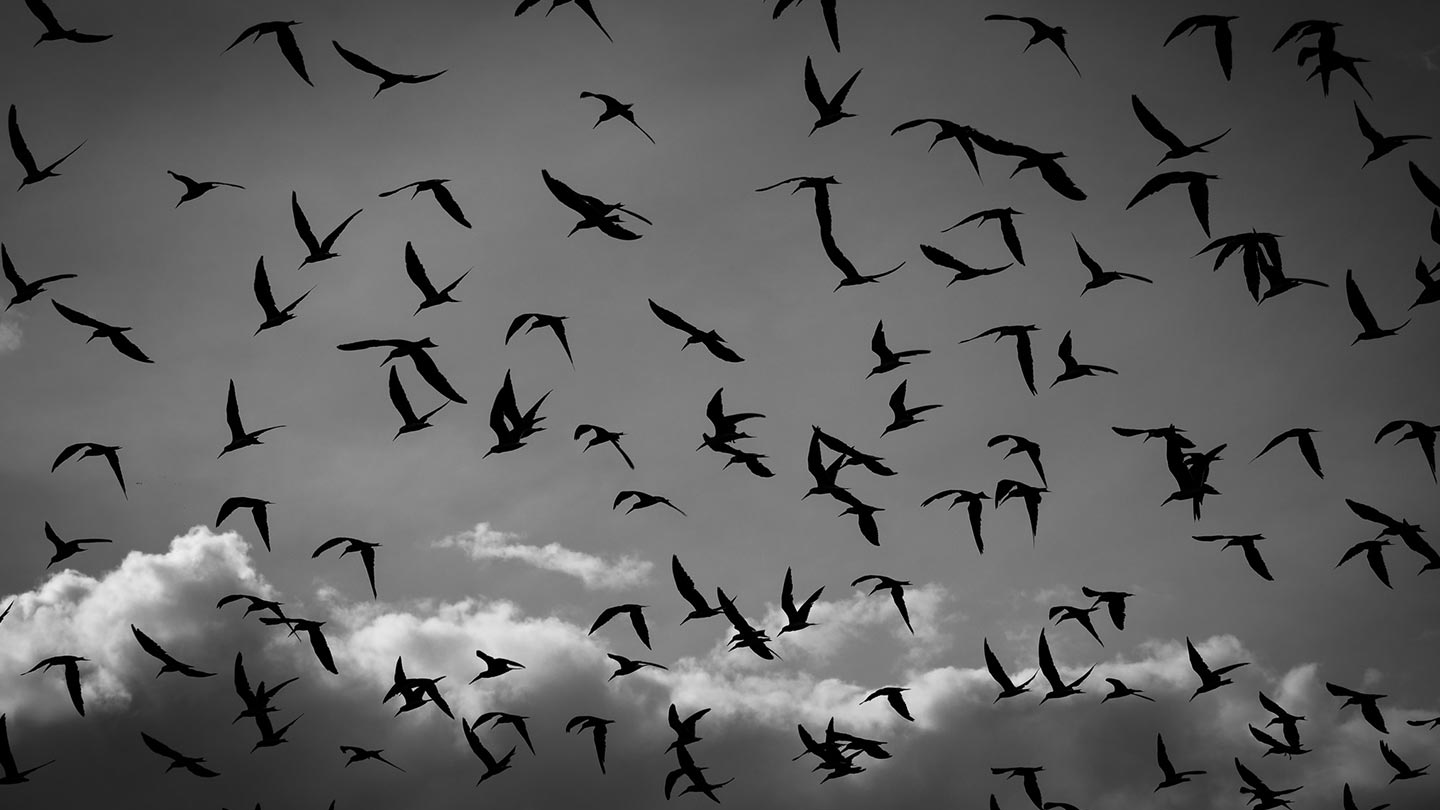
Some of the eye-catching bird species that can be found in Uganda include the Levaillant’s Cuckoo, Karamoja Apalis.You can also look forward to seeing the Abdim’s Stork, Night Herons, Ituri Batis, Northern Carmine Bee-eaters, Martial Eagle, Giant kingfishers, Ostriches, Black-billed Turaco, Shelley’s Crimsonwing, Regal Sunbird, African Quailfinch, Abyssinian Ground Hornbill, Pink-backed Pelican, Flamingoes, Archer’s Robin Chart, Green Breasted Pitta, Yellow-spotted Barbet,White-spotted Flufftail, Long-eared Owl, Nubian Woodpecker, the African finfoot, African Fish Eagle, Nahan’s Francolin, Brown twinspot, Dwarf Kingfishers and many more.
More Bird Species Found in Uganda
Africa Jacana – it has long toes and long claws that enable them to walk on floating vegetation in shallow lakes their preferred habitat. Jacanas are common in most wetlands in Uganda.

Gray Parrot – they are mostly seen in any forested habitat.
African skimmer – It is found along rivers, lakes and lagoons.
African Emerald Cuckoo are normally seen in riparian areas and lowland forests.
Great Blue Turaco – found in forested areas including Entebbe Botanical gardens.
Black Bee-eater – found at the edges of the rainforests and in secondary woodlands.
Verreaux’s Eagle-owl – largest owl species in Uganda and mostly seen during night drives.
Shoebill – The shoebill also known as whale head or shoe-billed stork is a very large stork-like bird. It derives its name from its enormous shoe-shaped bill. They are mainly seen in Semuliki Wildlife Reserve, Mabamba Swamp and Murchison Fall National Park.
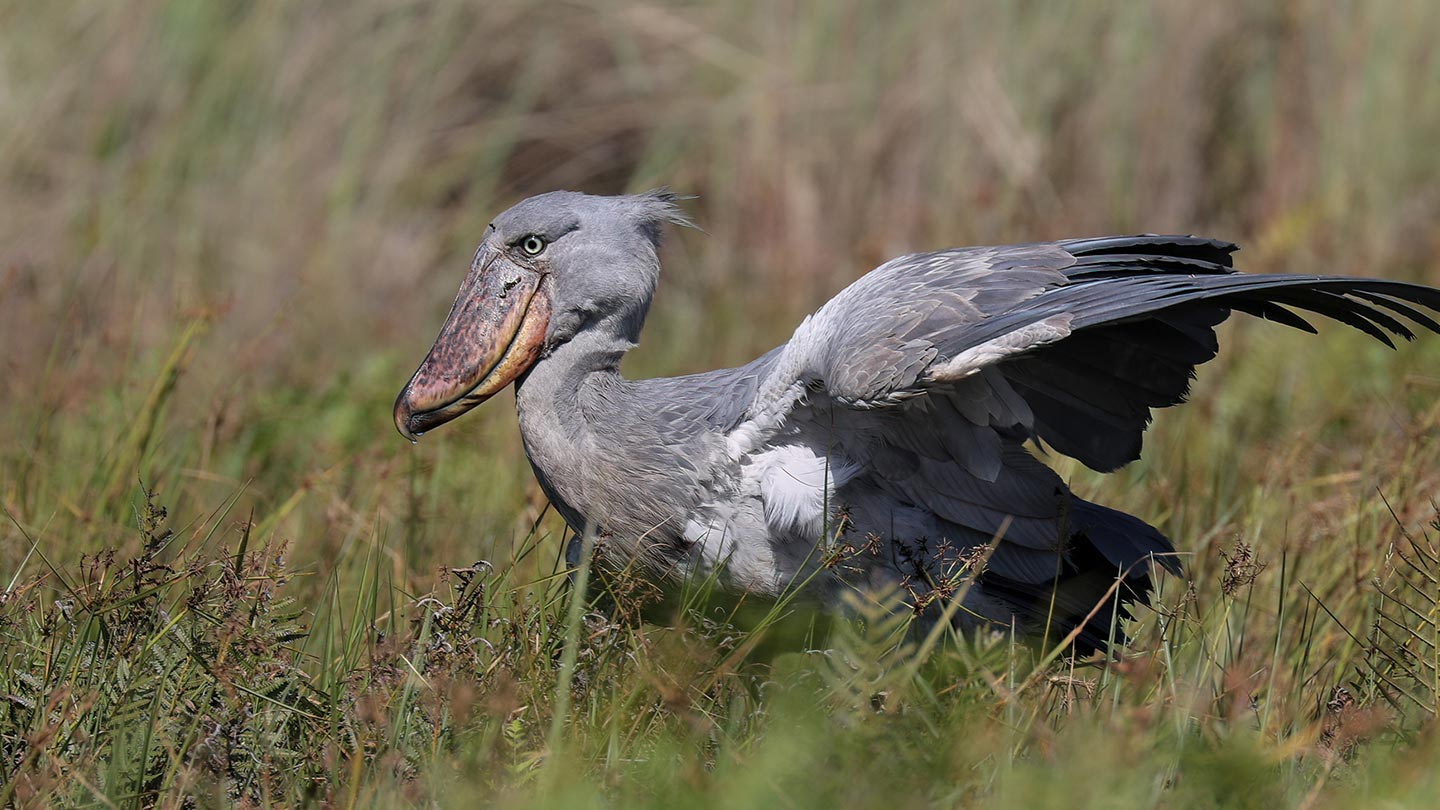
Goliath Heron – this is commonly seen during boat trips in Murchison Falls National Park.
Pennant-winged Nightjars – mostly seen on the road to the top of Murchison falls after dusk.
Common Ostrich – this is the World’s largest bird and it’s restricted to Kidepo Valley National Park.
Pelicans – these are water birds and commonly found in Kazinga Channel in Queen Elizabeth National Park.
Harmerkop – this is a medium sized water bird seen on the Mweya Peninsula in Queen Elizabeth National Park.
Saddle billed Stork – this is the largest and most handsome of several storks usually seen in pairs on game drives in Murchison falls.
Gray Crowned-Crane – Uganda’s national bird common in swamps and grasslands. They can also be found in marshes, cultivated lands and grassy flat lands near rivers and lakes in Uganda.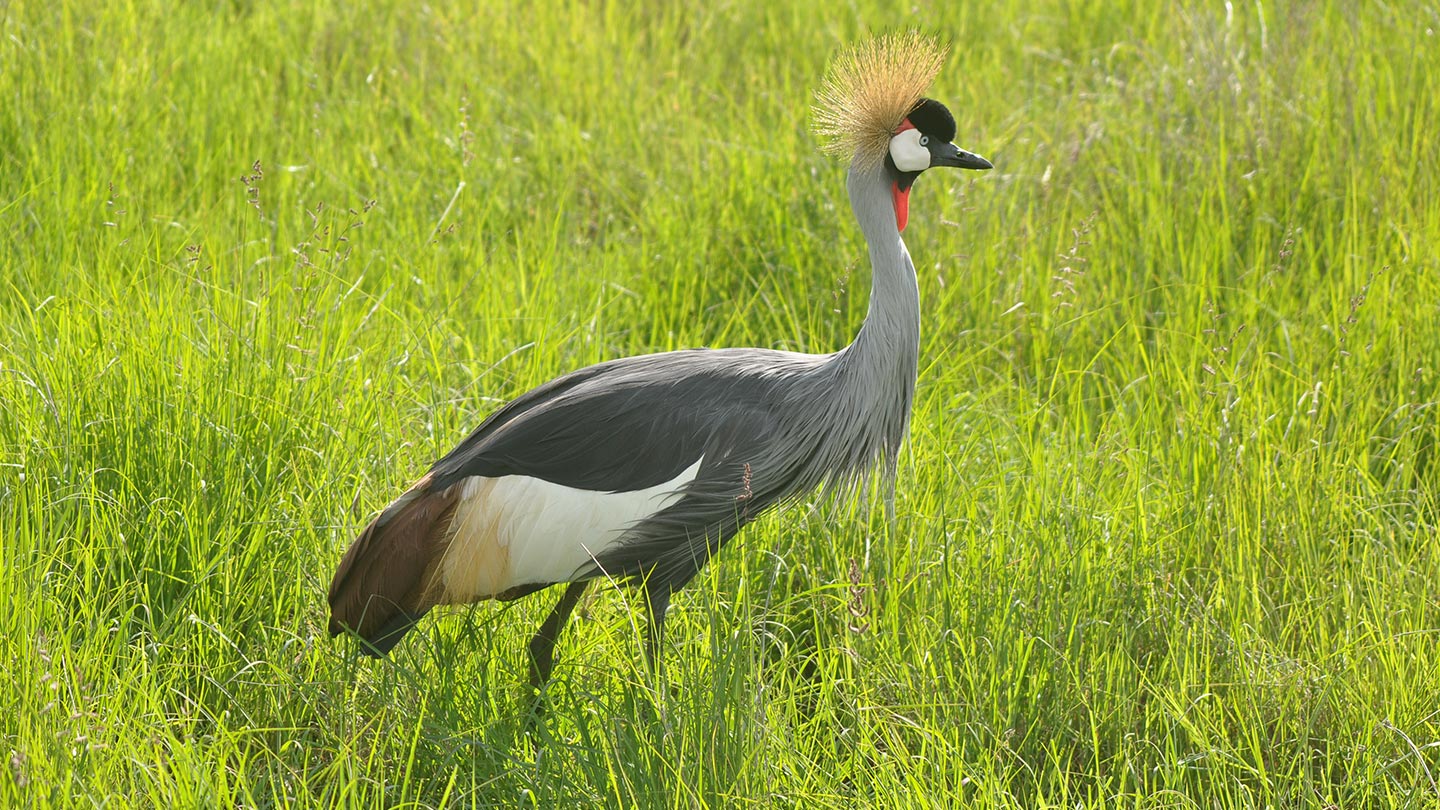
Marabou Stork – this is a large wading bird in the stork family usually found in both wet and arid habitats often near human habitation especially landfill sites. It is sometimes called the “undertaker bird” due to its shape from behind- cloak-like wings and back, skinny white legs, and sometimes a large white mass of “hair”.
Flamingos – these are tropical wading birds which have long legs with backwards-bending knees, long curvy necks, and most noticeably; they are pink. Flamingos tend to congregate in mudflats or lagoons where they can find shallow saltwater prey.
Eastern Plantain-eater – this species is a resident breeder in open woodland habitats in Uganda and feeds on fruits especially figs and other vegetable matter.
Piapiac – its main habitat is towards the more open country of cultivated land with fields and pasture and small associated towns and villages. In Uganda, it’s commonly found in Jinja and Murchison falls.
African Finfoot – this is an aquatic bird and normally seen on lakes and rivers. It’s commonly and easily seen on Lake Mburo.
Giant Kingfisher – the Giant Kingfisher frequents rivers, streams, lakes, dams and even mountain streams with marginal wooded areas both in forests and savannahs.
Red-throated Bee-eater – breeds in tall sandbanks on Lake Albert and the Nile below Murchison falls.
Pied Kingfisher – is sighted along the lake shores hovering above the water while searching for fish.

Lilac-breasted Roller – usually found alone or in pairs. It perches conspicuously at the tops of trees, poles or other high vantage points from where it can spot insects, lizards, scorpions, snails, small birds and rodents moving about at ground level.
Fork-tailed Drongo – These insect-eating birds are usually found in open forests or bush and are tolerant of arid climates.
Jackson’s Francolin – found in mountainous forests and stands of bamboo.
Denham’s bustard-It is found in open grounds including agricultural land, grassland and flood-plains.
Chocolate-backed Kingfishers – these are birds of primary and secondary lowland rain forests. They feed on insects, mainly grasshoppers and beetles, but also many other invertebrates as well as small lizards.
Papyrus Gonolek – It occurs singly or in pairs in papyrus swamps lurking among the vegetation and only flying occasionally usually a short distance over water to another patch of papyrus.
Red -headed bluebill – found in forest undergrowth, damp areas in thickets, near streams, clearings and edge of the forests.
Malachite Kingfisher – is seen beside lakes and rivers, perched on tall grass stems or looking for small fish. It’s normally seen so focused on the water that it can be approached quite closely.
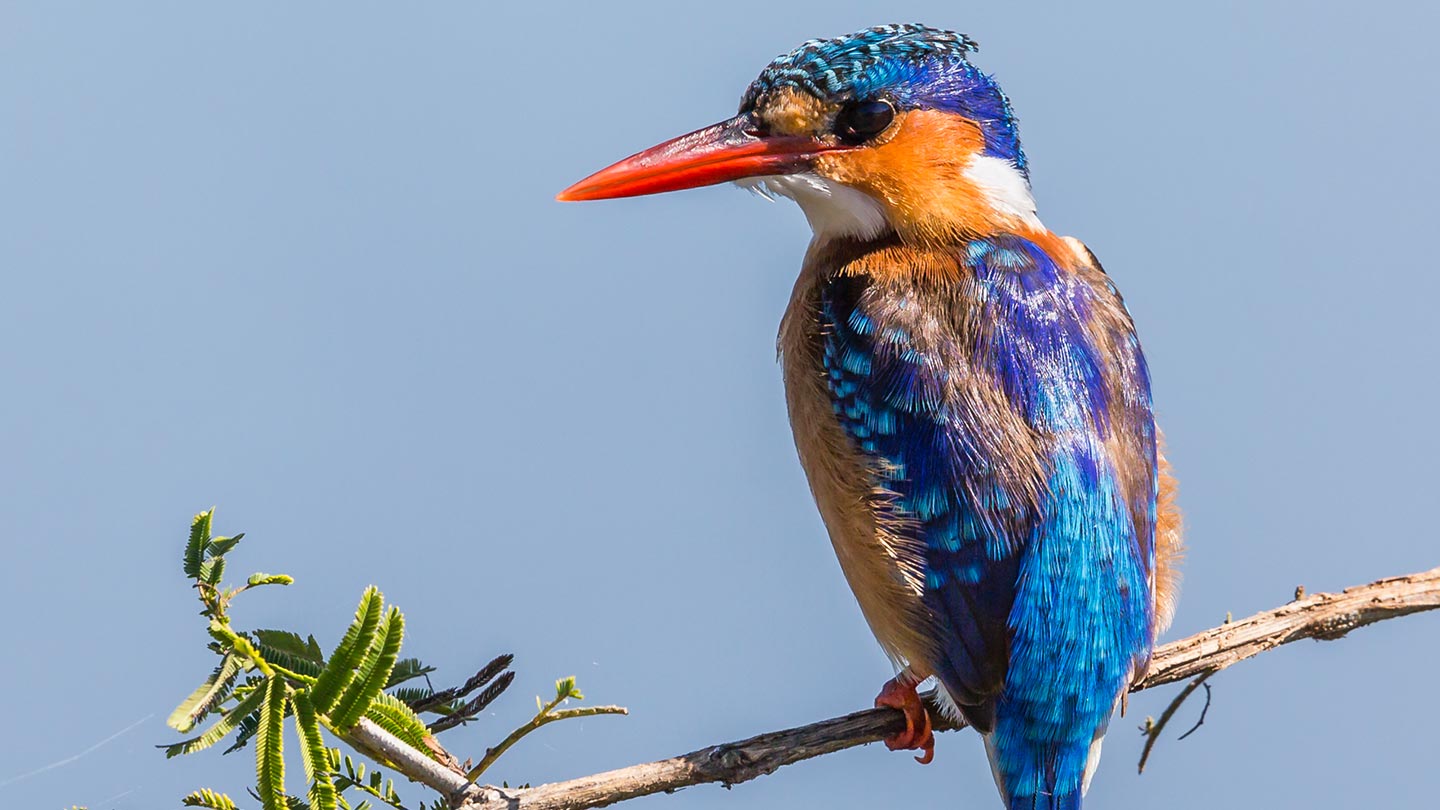
Best Time for Bird Watching
Birding in Uganda, is good all year-round, especially the main birding interest lies in the resident birds.Uganda is a very wet country and in the Wet seasons, roads and forest trails might be in poor condition however you can enjoy birding.
The best time for bird watching is from late May through September, when the rain is less and food is abundant. The main nesting season in Bwindi and Mgahinga (key sites for the Albertine Rift endemics) is May and June, but from mid-April to mid-May the rains are on.
February and early March is the only time Toro-Semliki is relatively dry, but it is hot in the north, including in Murchison Falls NP. December and January are also good months.
Why choose birding in Uganda?
Uganda offers top bird-watching sites with rare species like the shoe billed stork in Mabamba Swamp and the impeccable Mubwindi swamp which is possibly the leading destination for Birding safaris. Uganda is a leading destination for anyone with an interest in birding due to its landscape with swamps, forests, lakes, mountains and savannas with approximately 1065 bird species.
What to carry on your Birding Safari?
- Binoculars
- Telescopes
- A rain-gear as well as long-sleeved pants and shirt
- Hiking boots are preferable for forest bird-watching
- A camera with good zoom or telephoto lens is needed
We at Wave Expeditions will tailor make a birding safari to suit your taste and anticipation and make it a memorable safari.
What to expect while on your Bird Watching safari
Bird watching in Uganda is mostly done in selected wildlife conservation areas that are located in almost all regions of the country,Ramsar Sites, Forests and Sanctuaries.
You can certainly expect to see over 500 species of birds in a period of a week as your ace and appreciate Uganda’s beautiful fluffy numbers.
Important Birding Spots in Uganda
A safari in Uganda would be incomplete without engaging in a birding tour to the following selected areas.
Mabamba Swamp
The Mabamba Wetland area is famous habitat of the rare Shoe billed stork and was recently listed as an International Birding area.
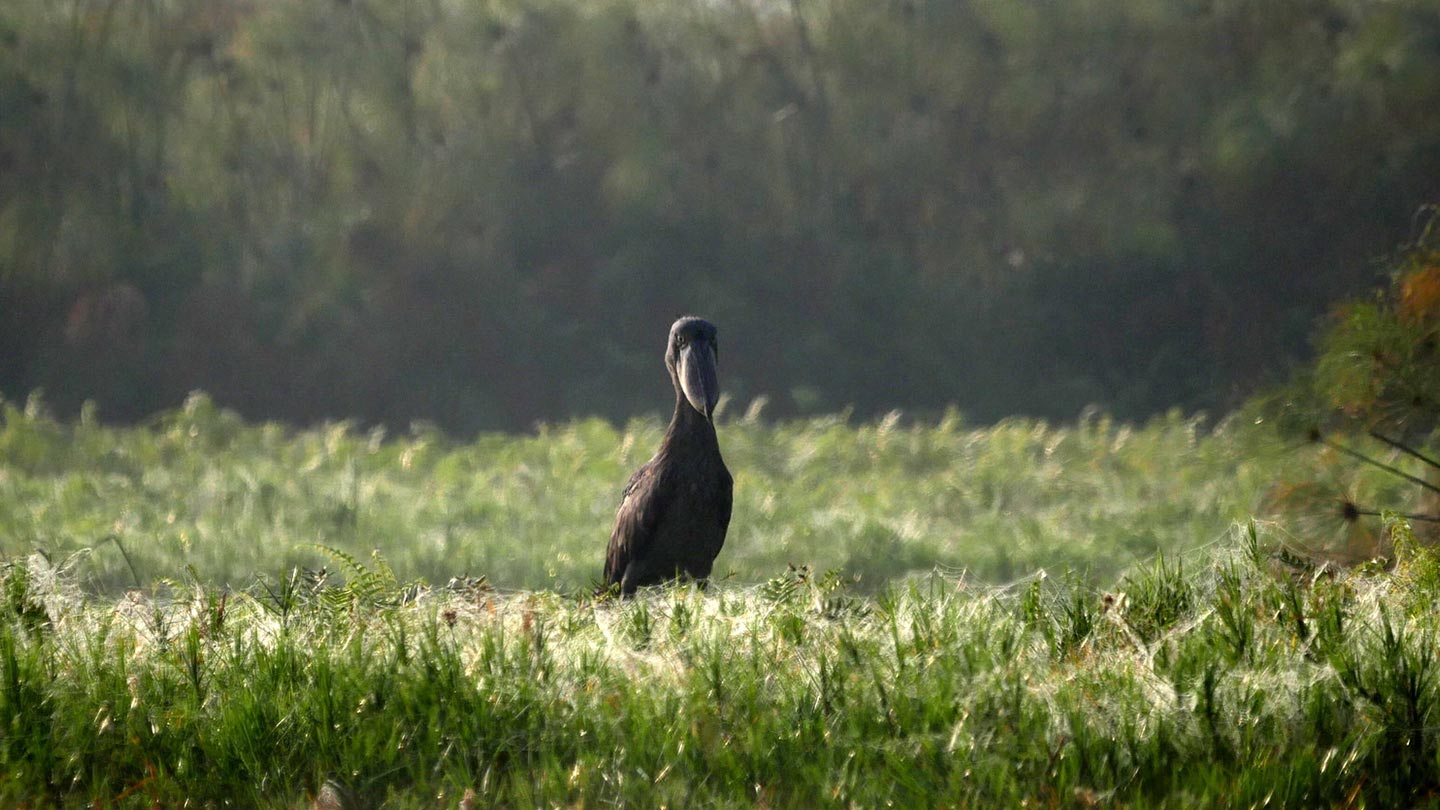
Kibale National Park
This Forest is mostly known for its Chimpanzee Tracking Safaris though it is also home to a variety of forest birds including the Red Winged Francolin Red Chested Fluftail African Pita, Joyful greenbul and many other bird species totaling to about 335.
Queen Elizabeth National Park
The park is mostly famous for its wildlife and the park also hosts over 550 bird species including 11 types of Kingfisher, several falcons,eagles and black bee eater.

Bwindi Impenetrable National Park
This impenetrable forest is rich in flora and fauna forests where you can encounter over 357 bird species including the Albertine rift Endemics like,Rwenzori Batis, Black bee eater and the African Green Broadbill.
Murchison Falls National Park
Most travelers visit this park for its majestic Murchison Falls where it derives its name and the park has a lot to offer including 370 bird species; the shoebill, giant kingfisher, bee eaters and other species.

Other Birding Areas include
- Budongo Forest
- Mabira Forest
- Bigodi Wetland Sanctuary
- Mgahinga National Park
- Lake Mburo National Park
- Entebbe Botanical Gardens
- Mpanga Forest
- Mount Elgon National Park
- Kidepo Valley National Park
- Semliki National Park
